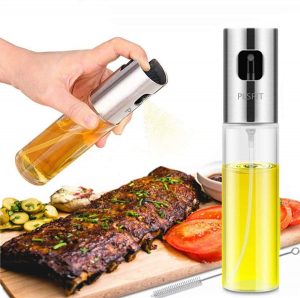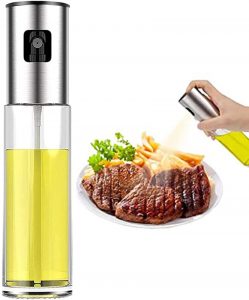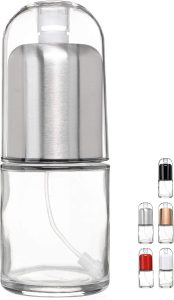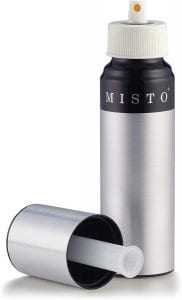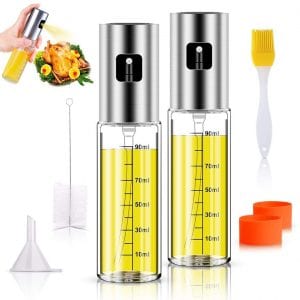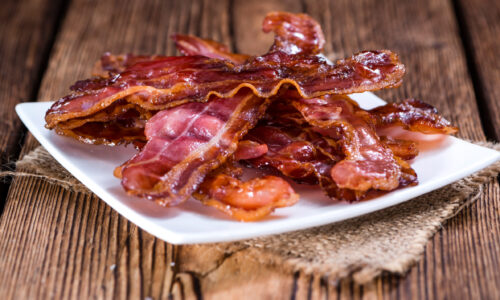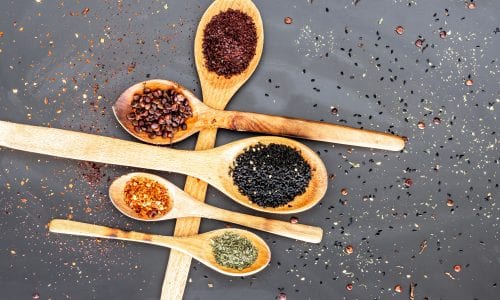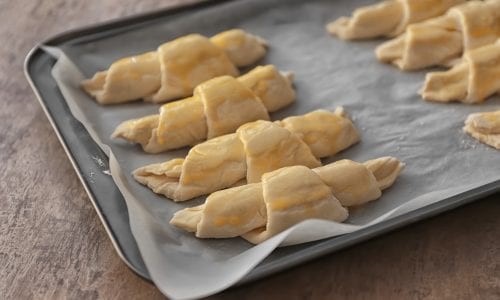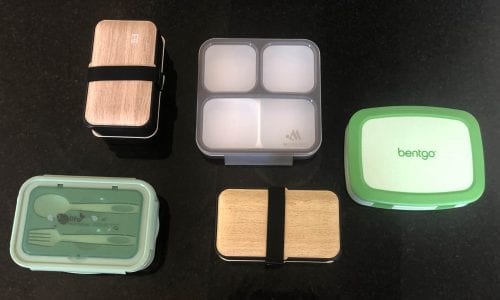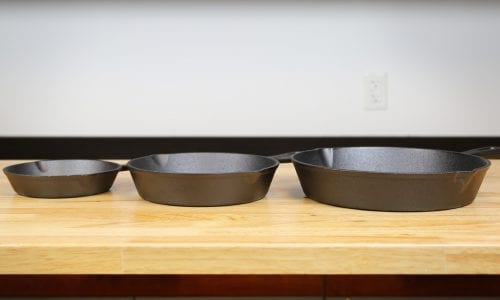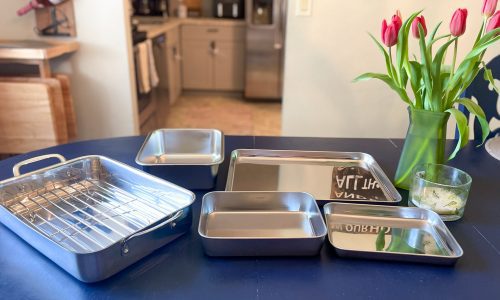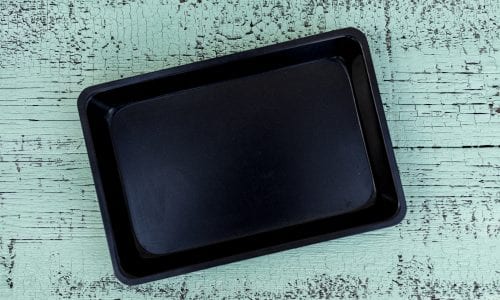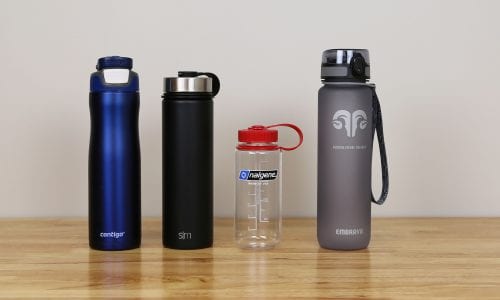The Best Oil Sprayer
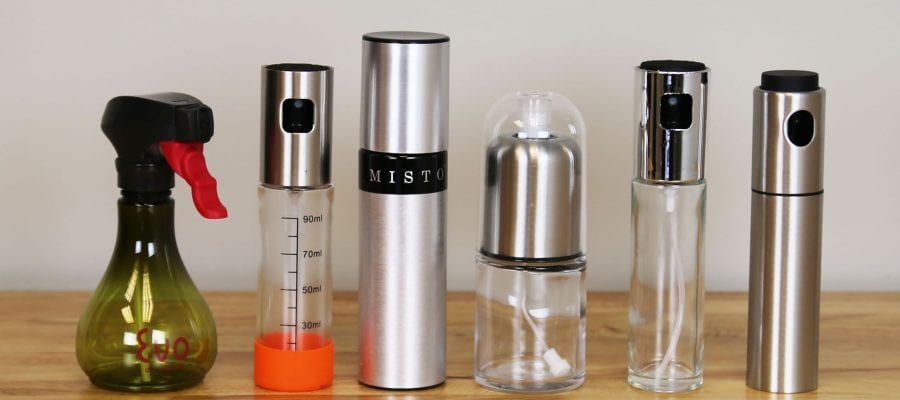
Our Review Process
Don't Waste Your Money is focused on helping you make the best purchasing decision. Our team of experts spends hundreds of hours analyzing, testing, and researching products so you don't have to. Learn more.
Our Picks For The Top Oil Sprayers
Adding flavor to a salad or greasing a pan to bake chicken has never been easier than with this handy oil sprayer. It's constructed using a durable glass bottom and a rust-resistant stainless steel top. The spritzer has a no-clog design and features anti-skid markings on the top for better control during use.
Multiple Capacities AvailableCouples may want to grab this oil sprayer with a 100-milliliter capacity, while families opt for the larger 210-milliliter capacity.
When it comes to helpful kitchen gadgets, this oil sprayer is a must-have item. Simple unscrew the top and pour your favorite oil into the glass bottom. Replace the top and the device is ready to use with the press of just one button!
One-Button OperationThis oil sprayer also works with water, wine, vinegar and just about any other liquid.
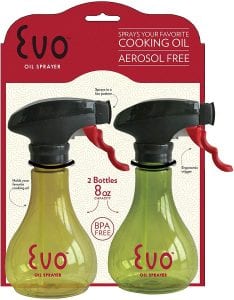
Evo Oil Sprayer
Delta Evo Kitchen BPA-Free Olive Oil Sprayers, 2-Pack
This oil sprayer allows users to choose between a horizontal or vertical fan spray. The ergonomic handle also provides a comfortable grip during application. Even though the sprayers are made from plastic, they are safe and free of BPA, Latex and DEHP.
Comfortable Ergonomic GripThis oil sprayer disperses the oil as a wide fan pattern for an increased coverage area.
While clogged filters may be a problem with other oil sprayers, it isn't with this option. That means you can cook and flavor your favorite dishes without interruption. The sprayer is made out of glass, which is not only antibacterial, but also free of any harmful chemicals that could leak into your food.
Clog-Free FilterVersatility is the best word to describe this oil sprayer, which works with almost any oil or liquid condiment.
Buying Guide
Oil sprayers can be used for a wide range of cooking tasks. You can spray a frying pan with oil to keep foods from sticking to the pan or you can spritz your salad, chicken or favorite side dish with oil to add a bit of flavor. Of course, you don’t have to stick with just oil. These sprayers work with everything from lemon juice to soy sauce to apple cider vinegar.
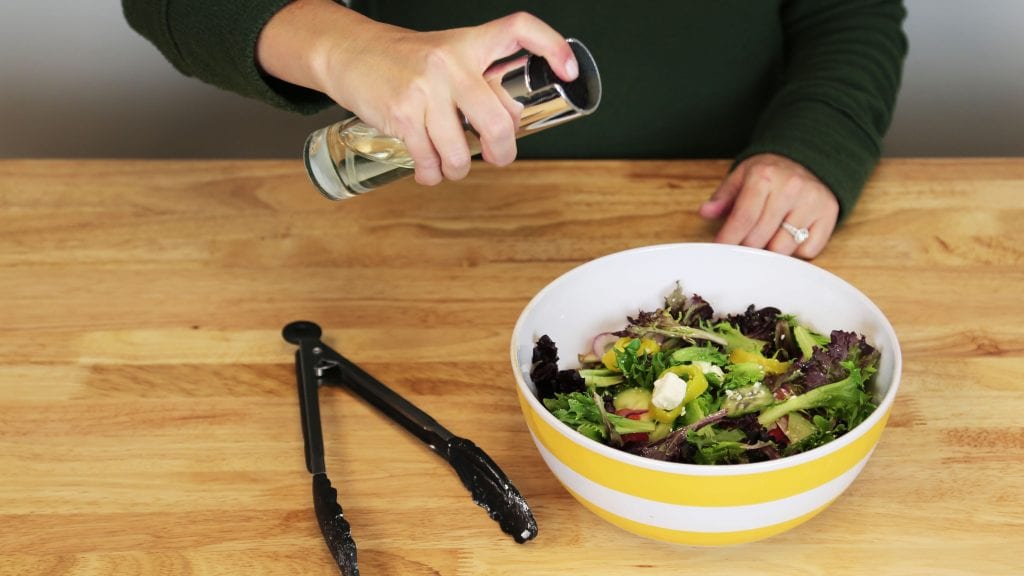
As you browse the different oil sprayer models, you’ll want to keep an eye out for certain features.
Examine the materials used to make the oil sprayer first. Some are made from durable stainless steel, while others are constructed from glass. If the oil sprayer is made from plastic, make sure it is listed as BPA, latex and DEHP-free.
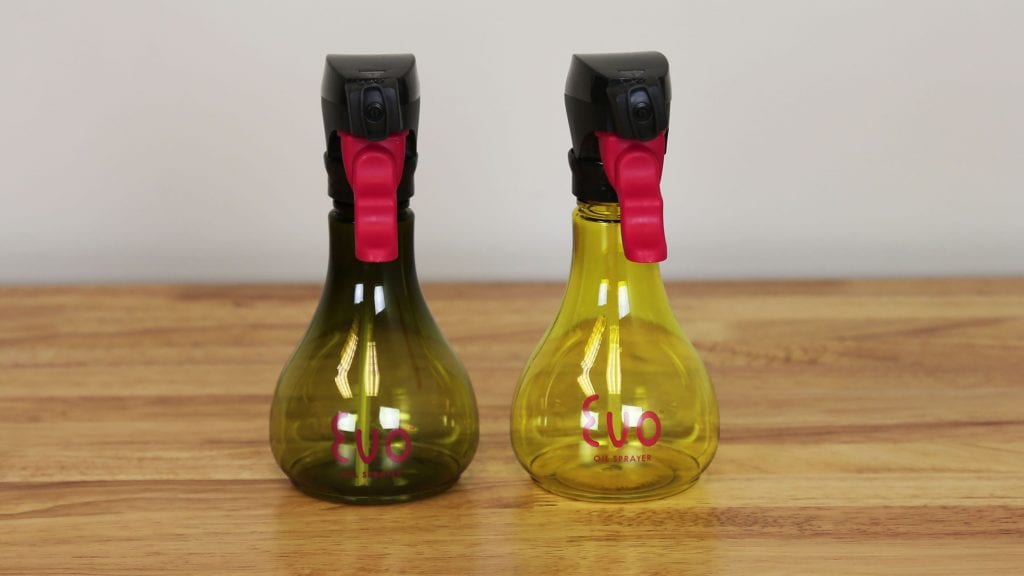
Determine whether you’d like an aerosol oil sprayer or a non-aerosol sprayer. Some aerosol sprayers use chemical propellants. Non-aerosol sprayers have an internal pump that you must manually prep before the oil will come out. For example, you’ll need to pump the cap of some sprayers between 10 and 15 times before pressing the nozzle to coat your pan with oil.
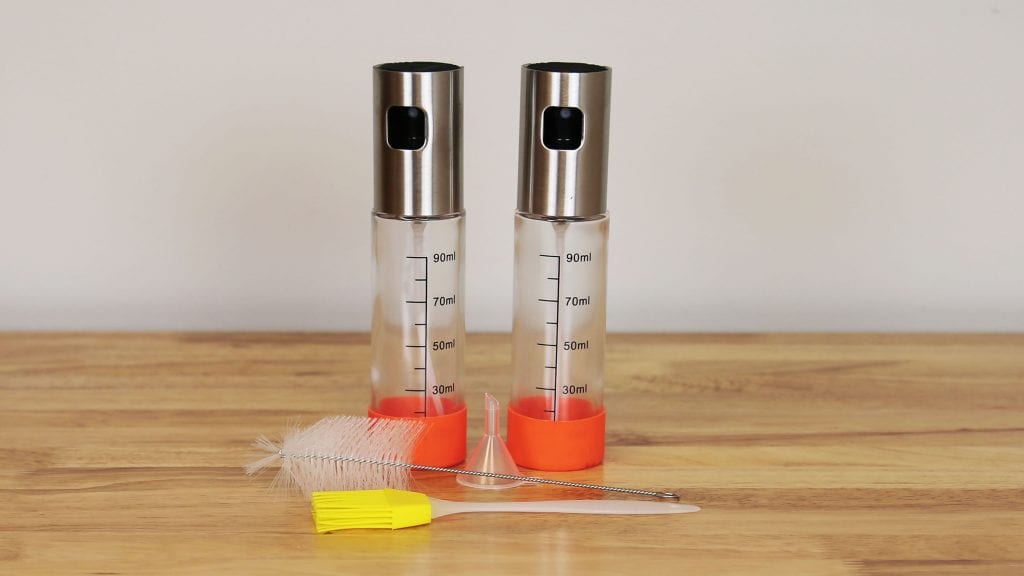
Check the oil sprayer’s filter next. You don’t want to buy a unit that has a tendency to clog. There are misters that have an anti-clog filter that even allows home chefs to add herbs and spices to their oil or vinegar before pouring them in the sprayer, so you’ll want to take this into consideration.
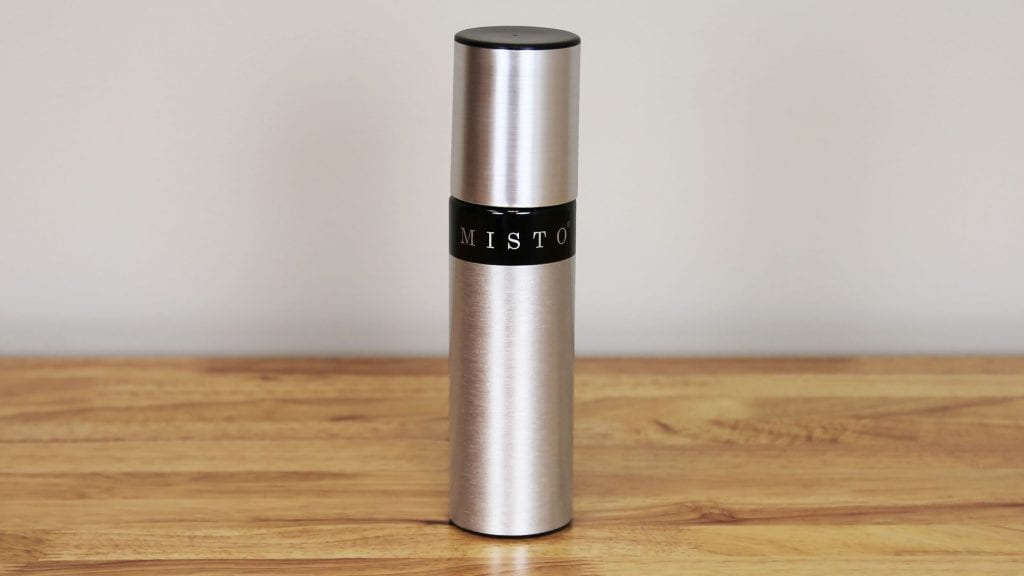
Decide what type of spray you’re looking for the sprayer to produce. Some sprayers disperse an even pure mist; however, other oil sprayers have more of a wide fan spray. There are even a few models that allow you to switch between a vertical spray and a horizontal spray.
What to Look For
- If the head clogs, you’ll need to empty the oil sprayer and fill it with hot water. Afterward, press the nozzle to run the hot water through the system. The hot water will dislodge the oil so that you can resume using the sprayer to flavor your meals.
- It’s important to clean your oil sprayer regularly. Some manufacturers suggest doing this every four to six weeks. Make sure you read the product care label first, as some recommend cleaning the unit with hot water only, and others suggest adding a drop of liquid dish soap to the hot water. Oil sprayers are not dishwasher safe, so you’ll need to plan on cleaning them by hand.
- Always check the opening of the sprayer. If the opening is small, you can expect it to be both difficult to refill and hard to clean.
- When you opt for a non-aerosol oil sprayer, you’ll need to pump the unit quite a few times before you can begin spraying the oil on your salad or side dish. This may be a bit frustrating for some.
- Store the spray bottle at room temperature when not in use.
- It’s good practice to release any remaining air pressure in the spray bottle after each use.
- Determine your level of risk by looking for any guarantees and warranties before you buy. For example, some companies offer a 100% quality guarantee, while others provide a one-year manufacturer’s satisfaction guarantee.
- The price of oil sprayers is dependent upon the type of material used to make it and the number of sprayers in each set. Models made of stainless steel cost less than those constructed from glass. A two-pack also has a higher price tag because it contains two sprayers instead of just one.
More to Explore
Your oil sprayer can be filled with a variety of cooking oils. Here are a few you may want to use:
- Olive oil: This oil is best used cold as a dressing.
- Coconut oil: Coconut oil is great for sauteing foods at high heat.
- Peanut oil: If you need to deep fry or pan-fry foods, peanut oil is a good choice.
- Avocado oil: One of the more versatile oils, avocado oil can be used for everything from baking to searing a steak.
- Sesame oil: No good stir-fry is complete without the use of sesame oil. You can also use this oil to make flavorful dipping sauces.

